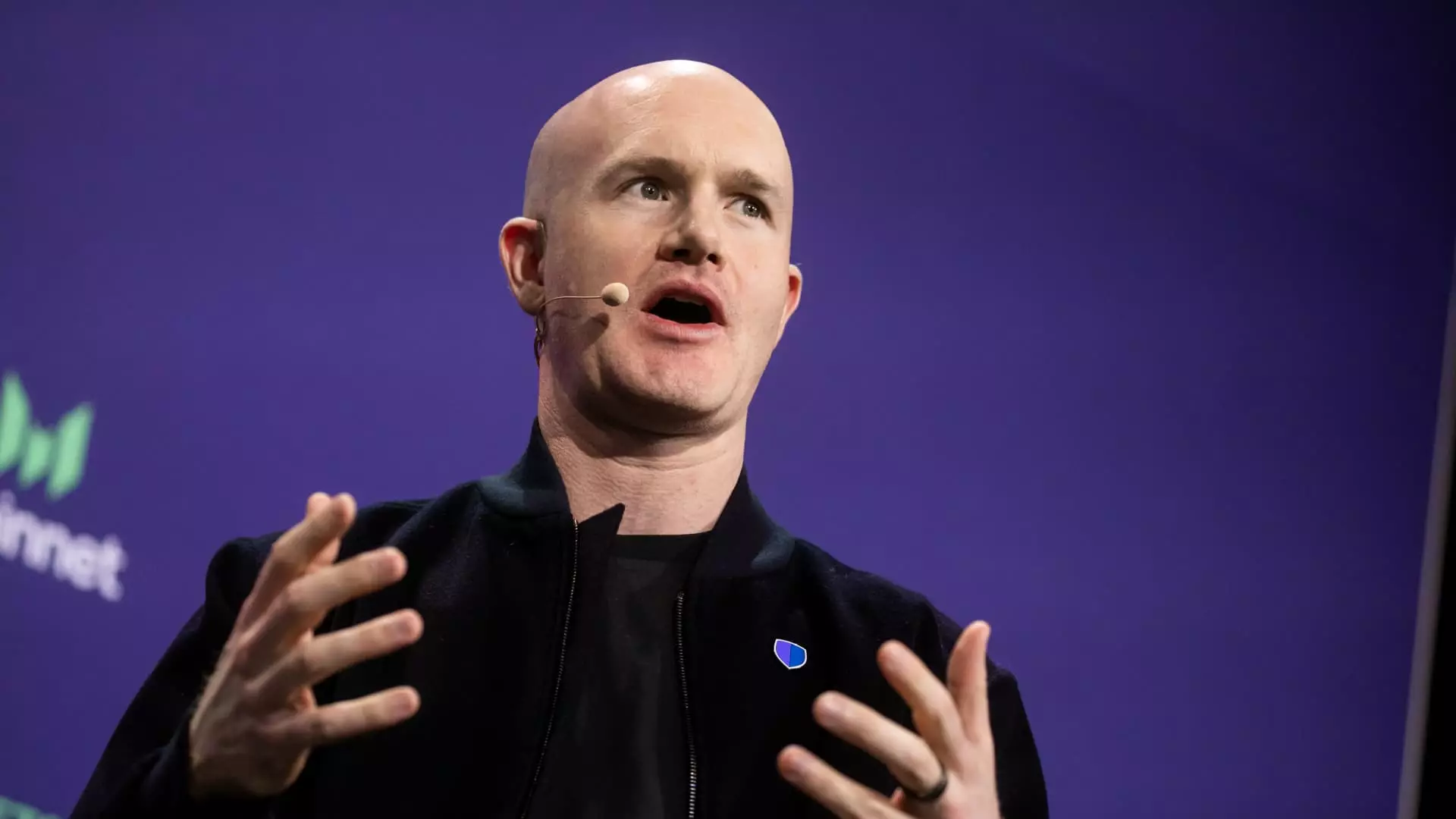Coinbase, under the leadership of visionary CEO Brian Armstrong, is determined to redefine the landscape of financial services. In a bold assertion during the recent quarterly earnings call, Armstrong expressed his ambition for Coinbase to become the preeminent financial services platform worldwide within the next five to ten years. This lofty goal begs the question: can a cryptocurrency exchange truly compete with established financial institutions? While there’s merit in his perspective that the traditional banking model is ripe for disruption, it seems somewhat naive to believe that transforming an entire industry will be as straightforward as Armstrong suggests.
The CEO’s focus on “skating to where the puck is going” implies a progressive vision for Coinbase; however, one cannot ignore the complexities entrenched in both regulation and consumer behavior. Is the cryptocurrency industry as ready for this transition as he claims? Traditional finance indeed is beginning to embrace crypto, as evidenced by the recent regulatory shifts from the Office of the Comptroller of the Currency and the Federal Reserve. Yet, there’s a certain disconnect between the optimistic promises of an industry leader and the conservative realities of the established financial giants.
The Strategic Shift: From Trading to Comprehensive Financial Services
Coinbase has made noteworthy strides beyond being a mere exchange, extending its services to encompass a fuller suite of financial offerings, including payments and custody solutions. Armstrong emphasizes that their primary demographic spans retail users to high-tier institutions, revealing an understanding of the diverse needs across the spectrum of financial entities. However, this diversification raises skepticism: can Coinbase effectively juggle these various roles while maintaining its identity? The potential expansion may dilute its core offerings, leading to operational inefficiencies and eroding the very qualities that earned users’ trust.
Moreover, while Coinbase has positioned itself as a pillar of the stablecoin market—recent revenue reports indicate a 50% increase—one must still question whether these gains are sustainable or merely a fad correlated with current market hype. Stablecoins may offer promising revenue models, but reliance on a single asset class can be perilous. It betrays a lack of diversification at a time when financial landscapes are increasingly influenced by volatility and regulatory scrutiny.
Regulatory Landscape: The Double-Edged Sword
The easing of regulatory constraints around cryptocurrencies can be seen as a boon for cryptocurrency platforms, yet this windfall is precarious. The regulatory landscape surrounding cryptocurrencies remains fluid and inconsistent, often leading to uncertainty for companies like Coinbase. While Armstrong lauds traditional institutions embracing cryptos as a sign of progress, one must consider how these institutions will not only integrate cryptocurrencies but also hold significant sway in the legislative arena.
As legacy banks openly contemplate issuing their own stablecoins, Armstrong’s caution regarding proprietary solutions highlights a foundational truth: interoperability is crucial. The competition will not solely be about technology; it will also entail navigating a convoluted regulatory maze that could hinder or stall the very ambitions Coinbase aims to achieve. It would be naive to presume that traditional financial entities, driven by risk aversion, will simply embrace radical changes without seeking to regulate them.
Can Coinbase’s Vision Deliver on Its Guarantees?
Armstrong’s enigmatic confidence about becoming the number one financial services app is certainly inspiring, yet it risks breeding complacency. The reality is that significant disruption in financial services comes with rigorous competition, and Coinbase faces a myriad of challengers, both established institutions and burgeoning fintech firms that threaten to siphon away potential clientele.
There’s also the fundamental question that arises: does the existing consumer base truly value the convergence of traditional finance and cryptocurrency? Many individuals remain skeptical, preferring to compartmentalize their financial activities rather than merging two distinct worlds. As Coinbase embarks on its ambitious trajectory, it cannot overlook the crucial element of consumer trust, which it must cultivate further.
Armstrong’s aspirations, while grand, reflect an industry that has long celebrated disruption. However, true transformation demands not just vision but also pragmatism. Therefore, as Coinbase positions itself at the intersection of innovation and tradition, it must tread carefully, lest it become a cautionary tale in the annals of financial ambition. While the horizon is undoubtedly illuminating, the journey to the top of the financial world is fraught with challenges and uncertainties that will test the mettle of the cryptocurrency giant.

